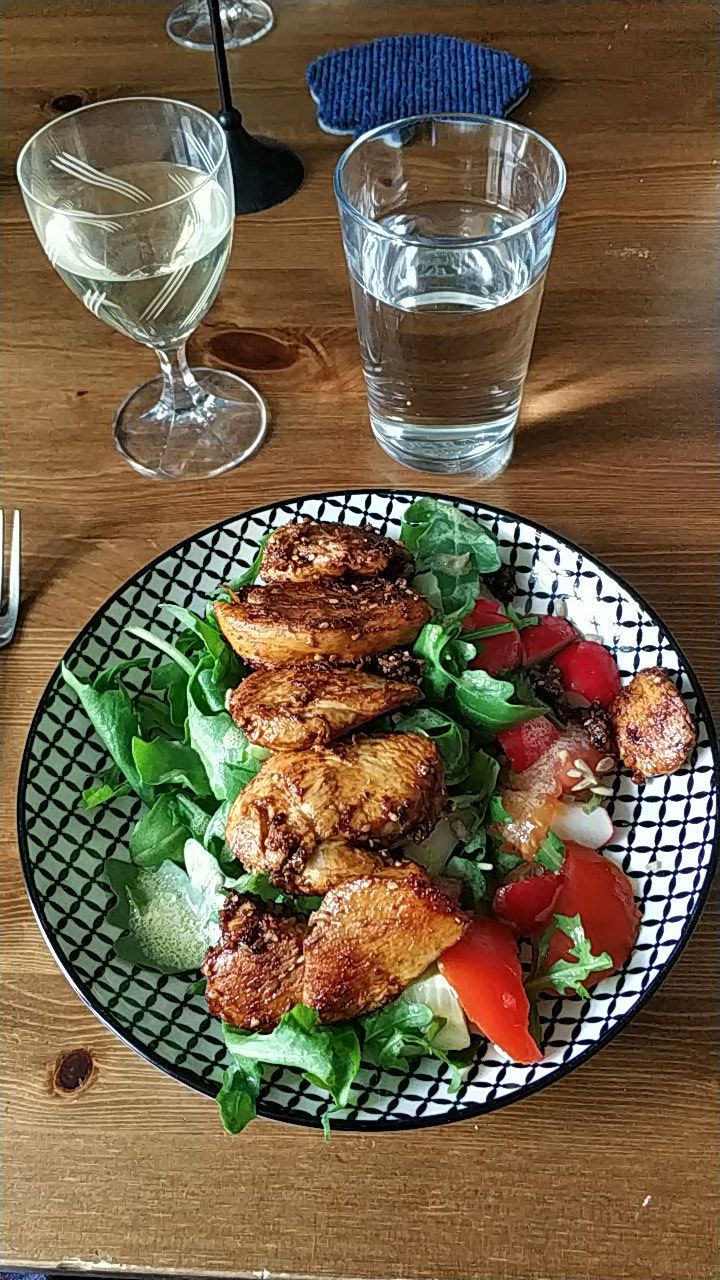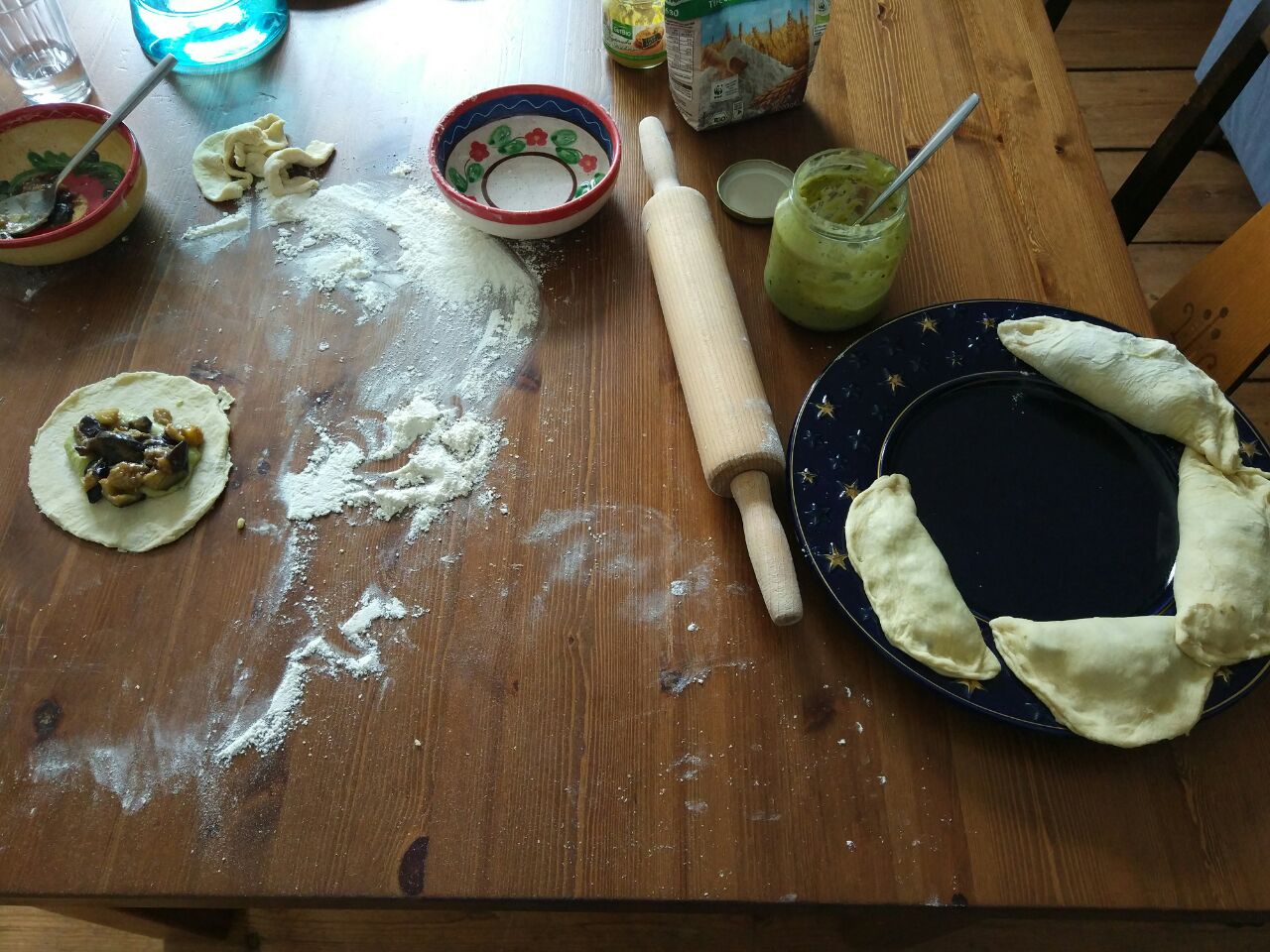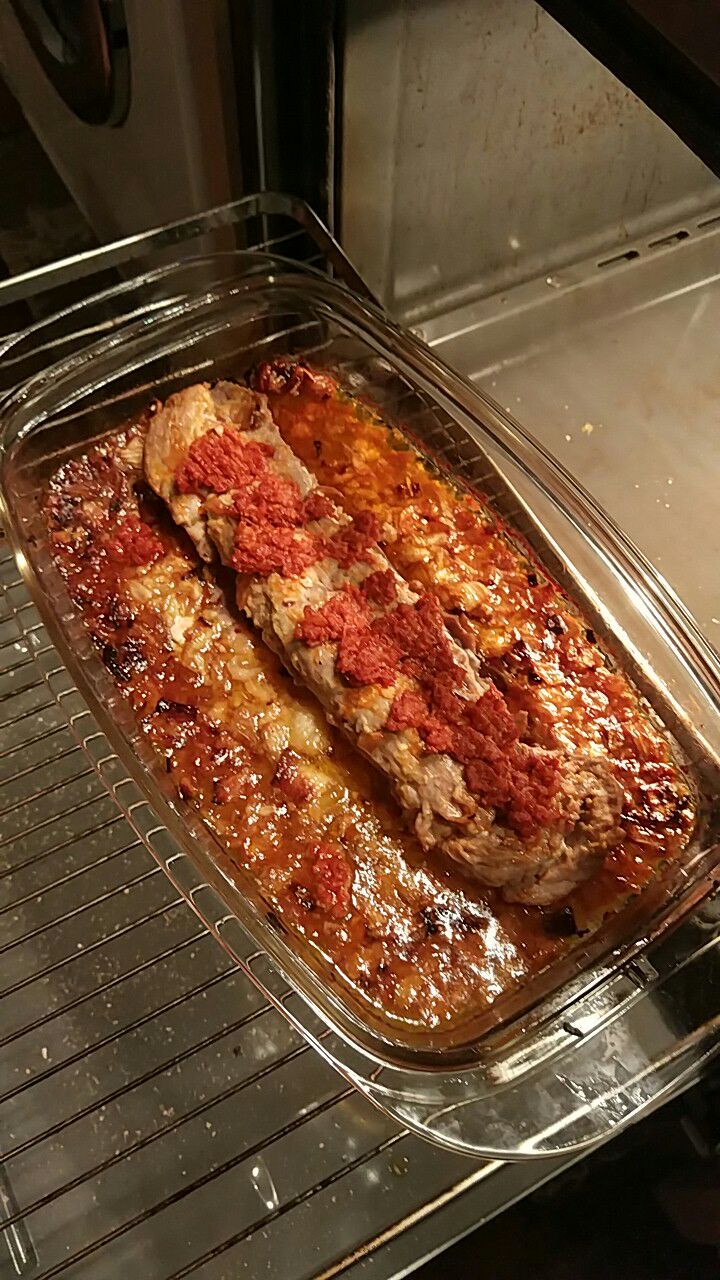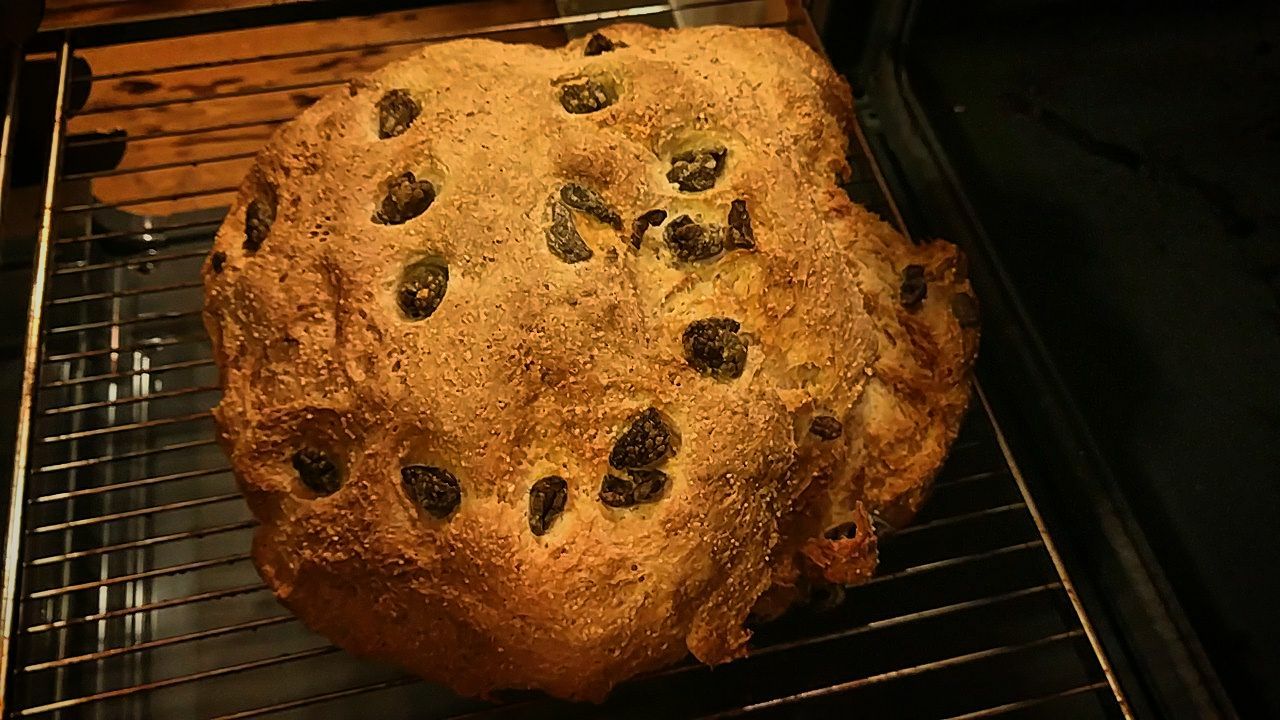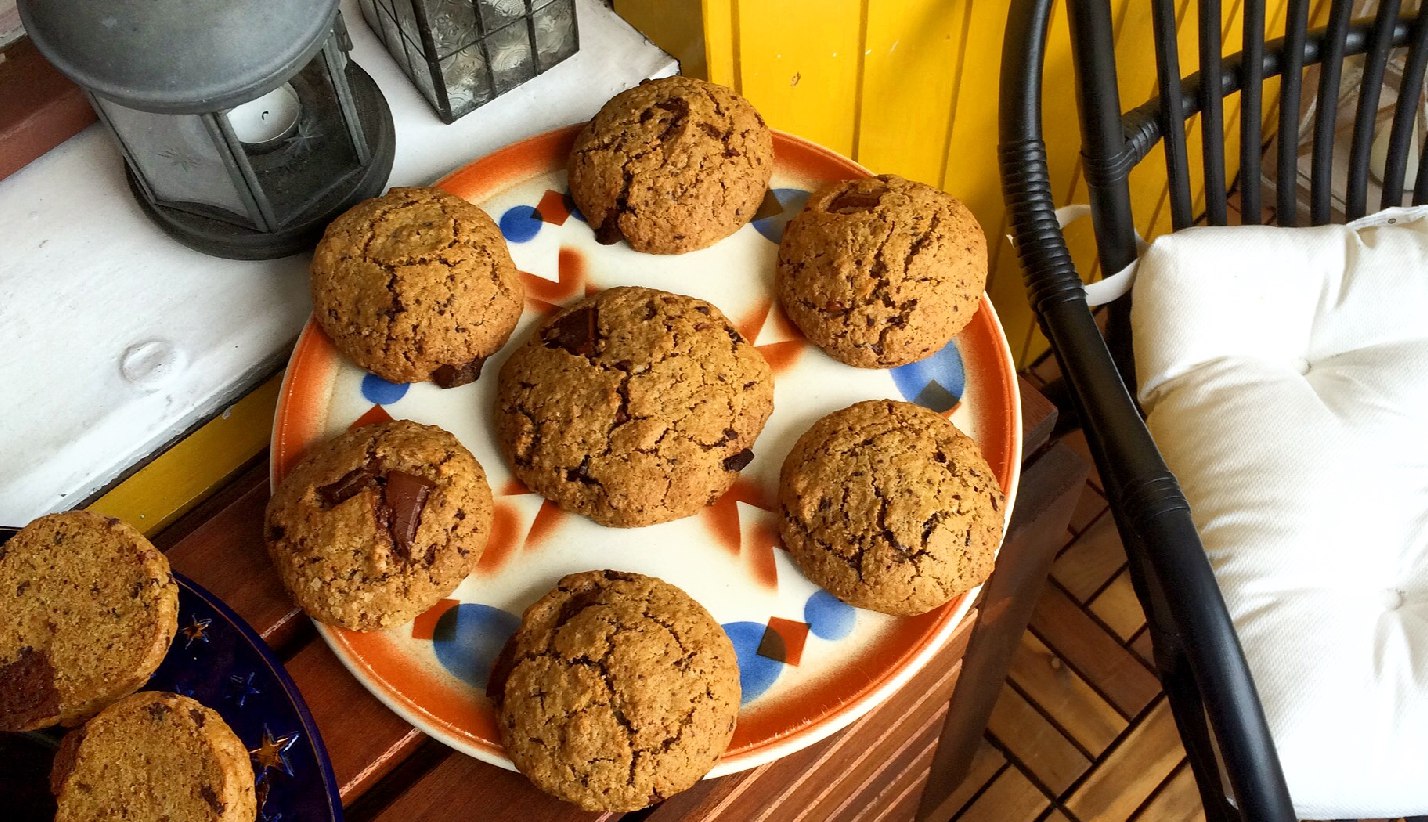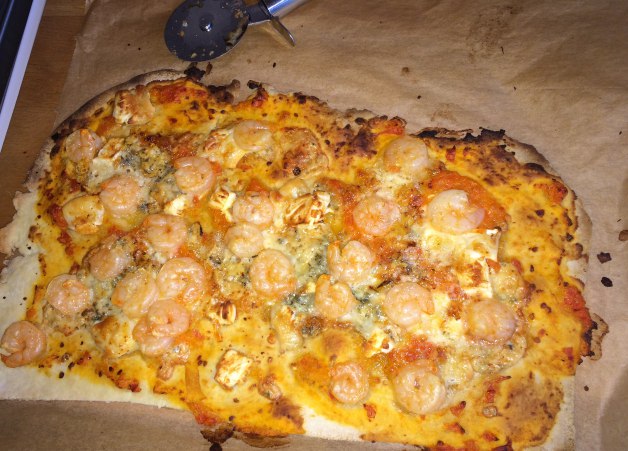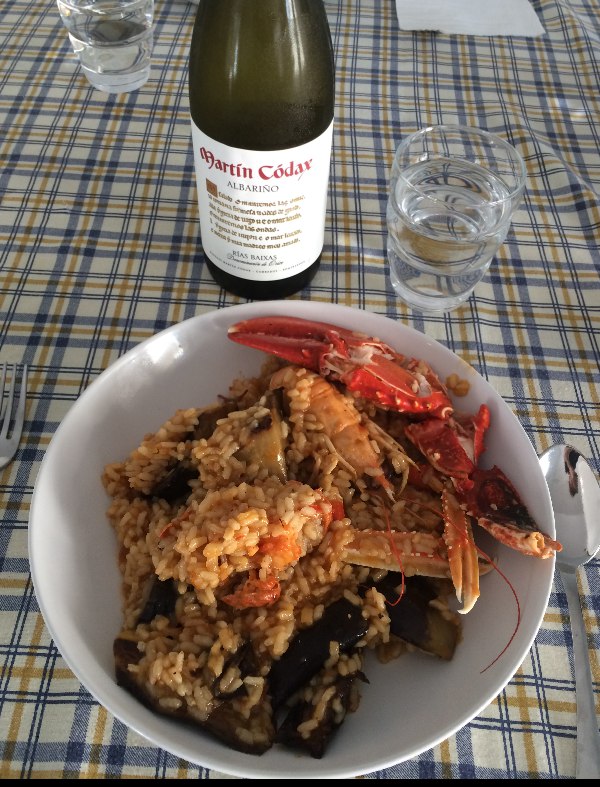These are Pau’s recipes and they are just small dishes I had to improvise sometime and which happened to be dainty (it doesn’t happen all the time). This is also a kind of cook book for me, to remember which ingredients I employed that lucky day. Anyhow, here you are… Feel free to change ingredients and whatever you want. Everything is under the BSD license!
Penne à la Pau (20/06/2004)
Ingredients
For two people
Penne, 250gr
Four garlic cloves
A piece of good cured cheese
A broccoli
Dry tomatoes in a pot with olive oil
Preparation
Cook the broccoli until it’s soft and put it apart. In the same pot, fry the garlic cloves and dry tomatoes in thin slices gently in abundant (olive) oil. Whilst you wait for the penne to be boiled, put the cheese cut in small pieces in a mortar and crush it to a dip by adding (olive) oil. In the same mortar we add the broccoli and mix it up with the dip. When the penne are ready pour the dip from the mortar into the pot and the garlic and tomatoes slices. Mix up well and ready!
Yum-yum?
Seven out of ten
Ginger chicken (20/06/2004)
Ingredients
Chicken, apples, lemon, ginger (hawhaw!), sugar peas
Preparation
Prepare a good rice and put it apart. In a frying pan fry lightly (with olive oil) the sugar peas (but not well-done). Do the same with an apple cut in slices.
After having cut the chicken in small pieces we start frying it with the ginger, but putting everything together from the beginning.
When it’s done we add the juice from a squeezed lemon and a bit of grind chilli and wait until almost all juice has been consumed. Then we add the apple’s slices and the sugar peas.
Yum-yum?
Say 80%
Red lentils à la ick-bin-ooch-een-Berliner (14/05/2005)
Ingredients
Red lentils (my!), coconut’s milk, green beans and any kind of vegetables you find in your pantry, chilli, pepper, ginger and potatoes
Preparation
The good thing of red lentils is that you don’t have to leave them to soak the night before or things like that. You just take the package with row lentils, boil them for about twenty minutes or so and that’s it. Pay attention because these 20 minutes are a bit diffuse science and you shouldn’t trust it much. Just taste them and when you have the feeling they’re ready, even though they are a bit hard inside, stop boiling. These small ladies are very sensitive, so you better take care.
When they’re ready add the coconut’s milk, the vegetables already prepared and all spices you like and the boiled potatoes (not many, just a few). It should be a bit hot, so put a bit chilli. When you think it’s about to be ready, add grated ginger and wait until all is well mixed.
Yum-yum?
85%!
Sea bass a la Visanteta or “Libertarian levrek” (16/04/2006)
Ingredients
A prominent Mr Sea Bass (we’re high all day on a turkish fishmonger’s close to our place we discovered recently!), potatoes, ham, garlic, olive oil, salt and lemon

Preparation
When the raw material is good you don’t have to think and do much… Catch that Mr Sea Bass, chop off the head, get rid of the scales, guts and tail and wash it well. In the cut put the crushed garlic, ham, a few lemon slices, oil all over the tray and fish and right into the oven! Just take care of the temperature and time… a maximum of 30 minutes (20 better, depends on the weight if the fish). Just 15 minutes later try to turn it over, but is a delicate affair, you may end up with a botched, ugly fish. As for the potatoes, I fry them… and that’s it.
Yum-yum?
100%. Fish is the equivalent to ambrosia we, poor mortals, got awarded.
Gilthead bream a la sal “Mad çipura” (23/04/2006)
Ingredients
Gilthead bream, as you can read, oil and 2kg rough salt

Preparation
Easy… take the fish and put it on a tray (1), cover it completely with rough humid salt, oven for 20-30 minutes with maybe a tray of potatoes if you wish (2)… take them out, break the salt shell with a small hammer (3) and that’s it (4) Maybe you can prepare a bit of all-i-oli for the potatoes, not for the fish! It tastes too good for that…
Just a couple of hints: The fish must be dry; if you want to have the head chopped off and the fish washed, cover the cut with a bit of aluminium foil to avoid the salt coming in.
Yum-yum?
105%!
Lamb au vin “kuzu mit grossem DTs” (03/09/2006)
Ingredients
Lamb, as you can guess, wine, oil, laurel, vegetables, salt and pepper.

Preparation
This is a relative easy thing to cook… For the example you can see in the pics, I bought the shoulder but you can also do it with a leg.
The most important thing is to do a couple of deep cuts in the meat pieces but without totally cutting them (I mean, don’t make smaller pieces), because this way the meat will cook well.
You can remove a bit of the fat, if there is too much, but in general you shouldn’t, because from the fat you get the best flavour for your dish, the broth… you’ll die eating it!! Mmmmh!
Put the pieces with a bit of salt and pepper in a tray with a few laurel leaves, a good spurt of (olive of course) oil, an even larger spurt of wine and right to the oven! Be careful, because the meat will start soon to roussir (and will smell of heaven!), so that you have to turn it over every ten minutes or so and pour a bit of the broth over it.
If you want to have some vegetables with your meat, put them after 30 minutes in the same tray but take into account that the lamb should not be longer than 30 min in the oven… more or less, just look how well it’s doing and that’s it. Add some more wine, wine, wiiiiine!
Some advices… You can use some cloves or more pepper etc but recall that a good dish has almost no spices on it. I learnt this from my mother, and she’s as right as you can be.
Yum-yum?
10 1/2!
Maki Navajateko “Genya loves tricycle as much as Marc enojoys kren” (05/10/2006)
Ingredients
Honestly… rice, roasted sea-laver, wasabi, which is something similar to kren but green, ginger, japanish vinager and everything you find in the fridge.
Preparation
First of all you’ll have to cook the rice, never mind which sort, don’t let people fool you. Maki will be fine with any rice. The only point is that the rice must be really dry afterwards. Therefore we’ll go for the traditional grandma thing: use twice the volum of water for rice. When the water has almost totally evaporated reduce the fire to the minimum and let it boil for a couple of minutes more. Then cover the pot so that the rice can absorbe the rest of water. When it’s ready pour the japanish vinegar by guesswork; don’t ask me how much, it’s a matt

er of feeling… Then put the pot in the fridge to cool down the rice.
While the rice is getting cold, we start cutting the things to put in the maki. What? Well, it’s up to you, what you find, no problem. Typically any edible, shrimp-like crustaceans, belonging to the sub-order Dendrobranchiata or Pleocyemata… loosen up, shrimps, prawns, vegetables, fish etc… And for the fun, put some wasabi in some of the makis, not in all of them, to imitate the Padrón peppers… Most taste sweet and mild, though some are particularly hot and spicy, which gives its character to the dish and is perfectly captured in the popular “Os pementos de Padrón, uns pican e outros non” (Galician for “PadrÃón peppers, some are hot and some are not”).
The most difficult thing: How to roll the makis. Once you have learnt it you’ll do it quickly. It’s important to have a bit of water close to you to wash your hands from time to time because it’ll be sticky and it’s a pain. Just put the thing as you can see in the pic on the right, put your thumbs below the roasted sea-laver sheet and roll it. When you have it and it cannot run away from you, stretch out the nippon carpet and roll it to the end. After that you cut the rolls with a very sharp knife and clean it after every single cut, otherwise the sheet will tear apart.
The ginger is to kill off the flavour of the makis, so that you can taste better the next one. I know it because a japo has told me and he is a master of this thing… and don’t worry about sticks. Just eat them with your hands… He’s told me it too and he’s japanish, so you can believe it…
Yum-yum?
9 1/2!
Potatoes gratiné “Vacherin à la Leeuwin” (10/02/2007)
Ingredients
Well, what shoud I say? It’s easy, as all good things in life… to make it tasty you don’t have to think much, you’ll just need the cheese (a real vacherin, not the thing you see in wikipedia, which is a true fallacy, potatoes, garlic, pepper and salt

Preparation
It’s really knotty, labyrinthine and even bothersome… Boil the potatoes, cut them in small pieces, cut the garlic (the quantity is up to you), disembowel the cheese and mix everything with the salt and pepper and right to the oven! … wait until you get a nice browny thing, get it off, wait for a couple of minutes and that’s it, enjoy (ah! I almost forget… don’t come to the idea of removing the edge of the vacherin!)
Yum-yum?
I really cannot be bothered about a mark here because this is something that escapes all concepts of the roof of the mouth that separates the oral cavity from the nasal cavity (palate)
Ice-cream Germany-Spain-Sant Cugat (30/06/2008)
Ingredients
Dulce de leche, cookies, sugar, yoghourt and milk
Preparation
Boil the milk with the sugar, pour everything in a bowl with the yoghourt and the dulce de leche, stir violently (I mean… gently) and put it in the freezer. Every 20 minuts or so take it out and stir to avoid the formation of crystals; we want a PRO ice-cream, don’t we. When it’s not that liquid you can add the cookies and keep on stirring until you get the desired texture
Yum-yum?
Eurocopa-alike
Trolixiannes or Clovisiannes “Hopman” (16/06/2007)
Ingredients
Red lentils, different species, garlic, olives, oil and eggs

Preparation
It’s not what I’d describe as elaborated: boil the lentils until they are a paste (you could occasionally use the mixer too, if you wish). Chop the garlics and olives as you can see in the first picture, mix everything up well with oil, add the eggs (picture 2, say, two every four people); then add species (fitting your desires, but I’d recommend cumin and parsley) and gently add small quantities to the frying pan taking care that you do not drop any ashes into it. Try to avoid that the Trolixiannes (or Clovisiannes) stick together while frying them and the result is the last picture.
Yum-yum?
YUM!
Arròs amb brou de peix i gambes “Mamicas té fred a casa de Holger”
Ingredients
Dos caps de peix, gambes, verduretes diverses, all, pebrot dolç, oli, sal, ceba, tomaca i safrá

Preparaciò
Abans de tot, i com Mamicas em va ensenyar, cal fer el brou. Per a això, el que he fet ha estat bollir ben bé els caps de peix amb ceba durant una bona estona, ficant-hi només sal. Després, retirem els caps i hi fiquem les verduretes que, en el meu cas de hui, eren api (l’arrel i les branquetes), carlota i poc més. En afegir-les, apugem el foc perquè isca la cosa bona i, després d’uns deu minuts, ho deixem al xup-xup fins que estiguen les verdures molt ben fetes. Després, en una paella, fem un sofregit d’all i ceba amb la tomaca gratada fins que estiga ben feta la cosa. Després fregim les gambes a part, les ajuntem amb el sofregit i fiquem un got d’arròs de paella (important). Remenem ben remenat, hi afegim el pebrot i, ben de seguida, abans que es creme, li comencem a fotre el brou i un poc de safrá. Paciència, paciència i quan el gra estiga amb el cor fet, au, a menjar. Depenent de com de caldós el vulguem, afegim més o menys brou.
Com de bo?
Amb un vi blanc està orgàsmic
Tartaleta d’espinacs Madama Butterfly Without Butter (01/03/2015)
What do you do on a Sunday in Berlin on a rainy weather? You go and fix a quiche. My daughter has been asking for ages for a spinach quiche because there’s this little place in the U-Bahn Friedrichstrasse Station where they prepare delicious (and expensive) quiches.
So, I decided to fix one myself. But, being a stubborn Spaniard, I refused to make it with butter and decided to improvise a dough with olive oil. It worked!

It’s quite a bit of work, but it pays off. For a normal container, use for the dough 300 gr wheat, one egg, 120 ml of olive oil, five spoons of water and a pinch of salt. Mix everything with a wooden spoon or whatever until the dough “breaks” (that’s why it’s called “masa quebrada” in Spanish) and then knead until you form a ball. Put it in the freezer.

Prepare the filling: In my case spinaches, goat cheese, olives, artichokes, one big onion, chopped and fried, cream, one egg and a few leaves of basil. Everything fresh, organic etc, etc…

Take out the dough, knead it with a rolling pin making sure it does not break. Then fold it carefully to bring it to the container and unfold it. Cut the pieces that are too much and use them to patch here and there. Put it in the oven for 20 minutes at 160C with something like lentils or rice to avoid the dough inflate. Take the paper and lentils out after that time and oven it again for some 8 minutes at 160C. The dough is ready and your whole flat smells of olive oil. Yummy.
Stuff the filling into it and put it in the oven for 20-30 minutes at 200C and then 10 minutes at 160C… and ready.

Why Madama Butterfly? Because I have been listening to it in the background all the time.
Caramelised onion Osteria Rouge 16/11/2019
Take a big, white onion, cut it in long, half-moon slices, fry it sloooooowly and wait until it is almost at the point you would like to eat it. Then add four coffee spoons of brown (cane) sugar and heat it up to the maximum while stirring all the time. You don’t want it crunchy, you want it half-boiled, half-fried, remember. Then add a bit of vinegar and keep stirring. Remove the remaining liquid, done. With goat’s cheese and bread it’s orgasmic… served cold, of course.

Why osteria Rouge? Because I ate caramelised onion there during a few visits to La Sapienza in Rome in 2018-2019.
All of it
Since I seem to not be able to keep this updated, I just add now a few random pictures of the last dishes I prepared.
